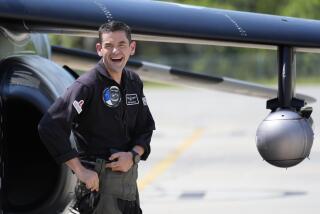Soyuz to Lift Off After Word From Sponsor
BAIKONUR COSMODROME, Soviet Union â A Soyuz rocket plastered with Japanese advertising was rolled into position today to carry a Japanese broadcaster into space Sunday after a truce was reached on money squabbles.
The Tokyo Broadcasting System, which is paying $10 million for the launch in a contract with the Glavkosmos space agency, complained that the Soviets were demanding huge sums of extra money for everything from spacesuits to $10,000 an hour for Soviet cosmonauts to hold a video camera during the eight-day mission.
âIt is not settled yet, but because the launch is so important to us and to the Soviets, we have stopped the negotiations and will return to them later, after the launch,â said Ichiro Sasasi, a TBS executive.
By tradition, all Soviet rockets leave for the launch pad at 7 a.m., because that is when Yuri Gagarinâs Vostok rocket rolled out to make him the first man in space on April 12, 1961.
And precisely at 7 a.m. today, the Soyuz rocket that will make Toyohiro Akiyamo the first journalist in space left its assembly plant on a rail line leading to launch pad No. 1.
Truck-mounted projector lights sliced through the morning darkness and lighted up the Soyuz as some of about 150 Japanese journalists scrambled to the rail bed to snap pictures of the booster emblazoned with advertisements for Sony, Ohtsuka Chemicals and Unicharm, makers of womenâs hygiene products.
Akiyama, 48, will be accompanied to the Mir space station by two seasoned Soviet cosmonauts--Musa Manarov, a joint holder of the record of 366 days in space, and Viktor Afanasiev.
Akiyamaâs backup, Rioko Kikuchi, 26, the TBS networkâs first female camera operator, suffered appendicitis Monday and was operated on, increasing the pressure on Akiyama to stay healthy.
More to Read
Sign up for Essential California
The most important California stories and recommendations in your inbox every morning.
You may occasionally receive promotional content from the Los Angeles Times.









